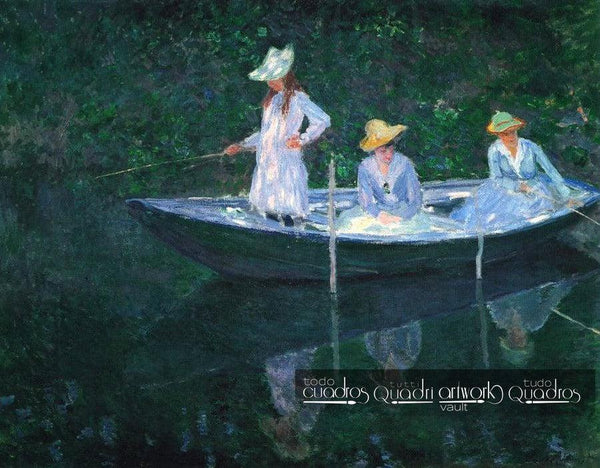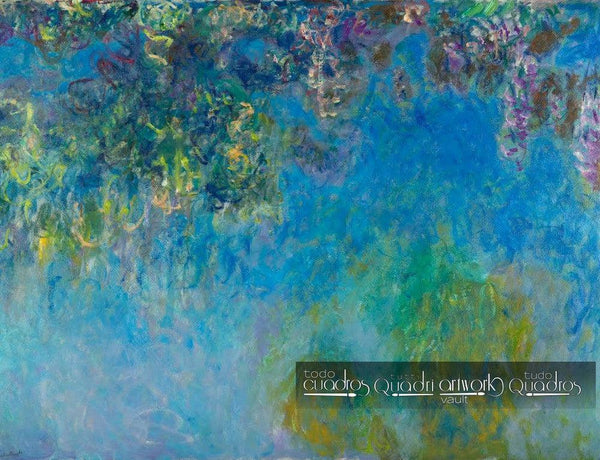Claude Monet
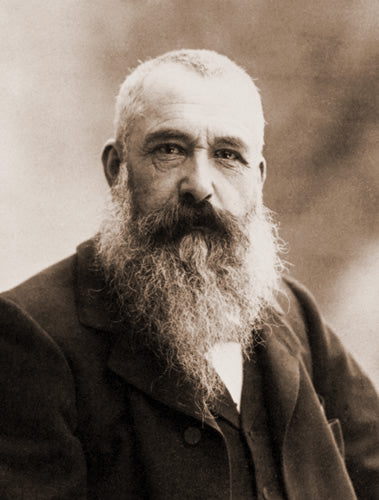
| Birth name: | Oscar-Claude Monet. |
|---|---|
| Artistic name: | Claude Monet. |
| Nationality: | France. |
| Year of birth: | 1840, Paris. |
| Year of death: | 1926, Giverny, France. |
| Style: | Impressionism. |
Leader of the Impressionist art movement, Monet's paintings are recognized as the purest examples of this style. His importance is reflected in the price achieved by his oil painting "Le Bassin Aux Nympheas", sold in 2008 in London for 40.9 million pounds sterling.
Monet laid the foundations of modern painting, his brush did not seek to communicate a story or give moral instruction to the viewer, but instead placed on the canvas impressions based on the sensations experienced by the eye. The pointillist brushstrokes, which he painted in his works with masterful property, are the origin of modern pictorial art.
© diCrox.
Works of Monet
-

Author: Claude MonetStyle: ImpressionismGenre: SeascapeOriginal title: Impression, soleil levantEnglish title: Impression SunriseType: PaintingTechnique: OilSupport: CanvasYear: 1872Located at: Marmottan Monet Museum, Paris
The work depicts the sunrise over a misty seascape.
It is the first Impressionist painting, the one that gave the style its name.
-

Author: Claude MonetStyle: ImpressionismGenre: LandscapesOriginal title: CoquelicotsEnglish title: PoppiesType: PaintingTechnique: OilSupport: CanvasYear: 1873Dimensions (original): 65 x 50 cm.Located at: Orsay Museum, Paris
Monet painted this work observing the fields of wildflowers outside the city that gives the painting its title. This work reveals Monet's passion for color. With dots of red, he disperses the flowers in a natural profusion across the lush green fields.
The composition is in an Impressionist style, displaying a landscape in which the figures of Camille and Jean (the painter's wife and daughter, respectively) are sketched in the foreground with strokes of violet, black, and yellow. Similar silhouettes reappear in the distance on the tops of hills more as a suggestion of color than as well-defined figures.
-
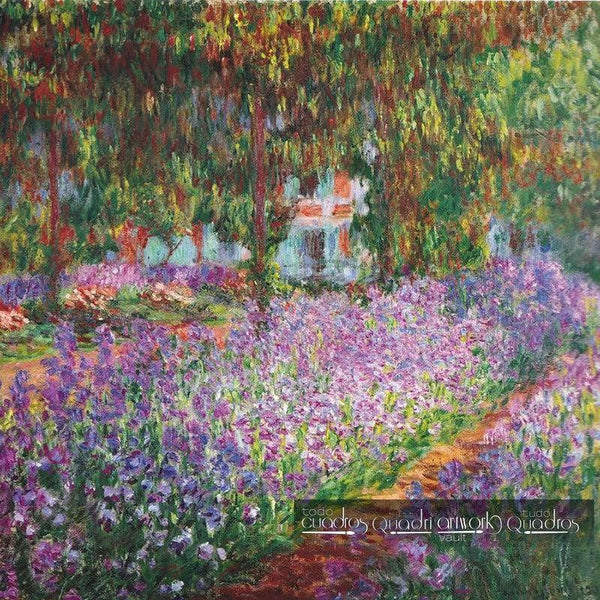
Author: Claude MonetStyle: ImpressionismTheme: NatureOriginal title: Le jardin de l'artiste à GivernyEnglish title: The Artist's Garden at GivernyType: PaintingTechnique: OilSupport: CanvasYear: 1900Located at: Orsay Museum, Paris
When the lilacs bloomed, Monet painted them with short, thick strokes of concentrated color, creating in this work a floating effect of a layer of flowers, distributed between sunlit and shaded areas.
The artist did not like the formal character of the main path leading to the door of his house in Giverny. Instead of the trees that were in the walkway, Monet scattered all sorts of flowers in colors: pink, fuchsia, green, yellow, red, and white.
The artist's wife protested the fact that the trees had been removed from the garden, but Monet insisted that they blocked the light from his flowers.
-
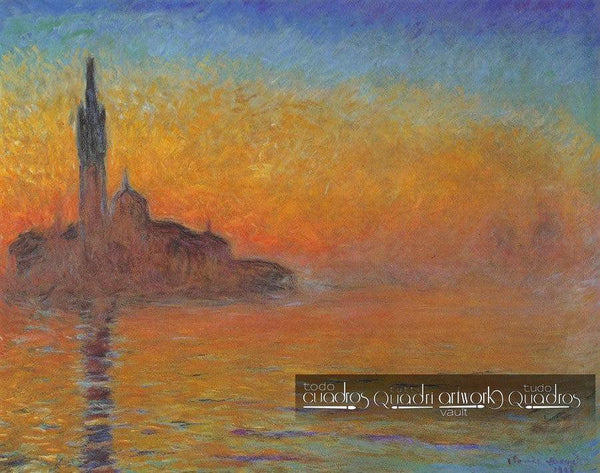
Theme: VeniceAuthor: Claude MonetStyle: ImpressionismOriginal title: Saint-Georges majeur au crépusculeEnglish title: San Giorgio Maggiore at Dusk; Sunset in VeniceType: PaintingTechnique: OilSupport: CanvasYear: 1908Located at: Bridgestone Museum, Tokyo
This is one of the most representative paintings of the artist. Characterized by the orange tones with which the artist perceived the sunset of the Italian city. The water and the cathedral of Venice are distinguishable.
-
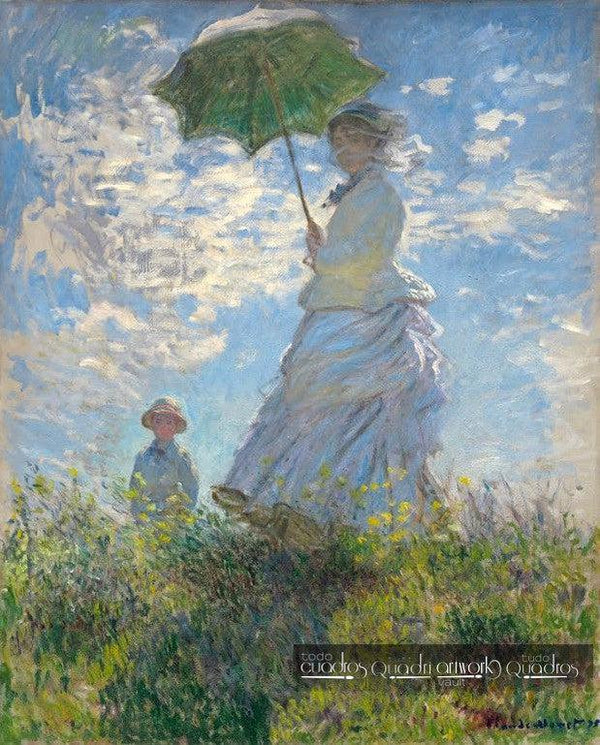
Author: Claude MonetStyle: ImpressionismOriginal title: La PromenadeEnglish title: Woman with a ParasolType: PaintingTechnique: OilSupport: CanvasYear: 1871Located at: National Gallery of Art, Washington
Probably the most remembered work of the artist, in which he portrays a woman, also known by the title "Woman with a Parasol". The painting was created in the city of Promenade, in 1875. It is said to be a double portrait, of the artist's wife and son.
-

Author: Claude MonetStyle: ImpressionismGenre: SeascapeEnglish title: The Cliffs at ÉtretatType: PaintingTechnique: OilSupport: CanvasYear: 1885Located at: Clark Art Institute, Massachusetts
The views are real and located in the French city of Étretat, where on its coast these spectacular rock formations are found. This one in particular is a stone arch that at that time, and still today, continues to attract tourists.
One of the particularities of the viewpoint chosen by Monet is that this portion of the beach can only be reached by boat or by descending very steep terrains on foot. The afternoon sun rays directly illuminate only a portion of the landscape, giving the work a beautiful effect.
-
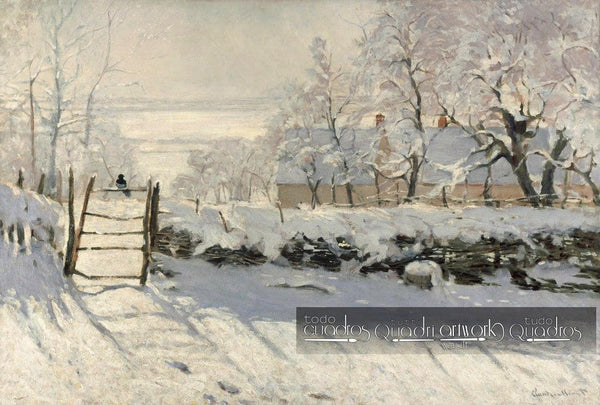
Author: Claude MonetStyle: ImpressionismOriginal title: La PieEnglish title: The MagpieType: PaintingTechnique: OilSupport: CanvasYear: 1869Located at: Orsay Museum, Paris
For his contemporary colleagues, it represented a complete break from what had been done in Impressionist landscapes. Until that date, classic elements such as flowers, fields, and portraits remained unchanged.
Although the landscape is cold, the artist has endowed it with a variety of warm hues, with the sun's rays turning the more illuminated parts yellow.
-

Author: Claude MonetStyle: ImpressionismGenre: SeascapeEnglish title: The Green WaveType: PaintingTechnique: OilSupport: CanvasYear: 1866-67Located at: MET Museum, New York
Although completed in 1867, this work was first exhibited to the public in 1879, more than a decade later.
At that time, a critic noted that the influence of Manet was evident in the work, specifically considering it as a modern version of naval battle seascapes, characterized by the framing and high horizon, of which the most notable is "The Battle of Kearsarge and Alabama" (1864).
-
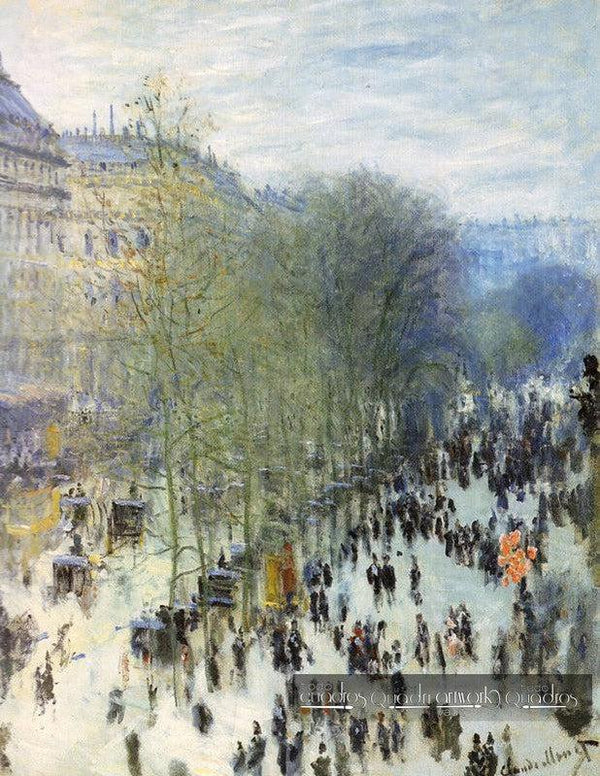
Author: Claude MonetStyle: ImpressionismOriginal title: Boulevard des CapucinesType: PaintingTechnique: OilSupport: CanvasYear: 1873 - 1874Located at: Nelson-Atkins Museum, Missouri
This way, the artist captures the urban landscape of the French winter.
The mix of black dresses, snow, and buildings form a masterpiece of cold colors.
-

Author: Claude MonetStyle: ImpressionismTheme: NatureOriginal title: Le Pont JaponaisEnglish title: The Japanese FootbridgeType: PaintingTechnique: OilSupport: CanvasYear: circa 1899
An Impressionist work showing a Japanese-style bridge crossing a marshy landscape in France.
-
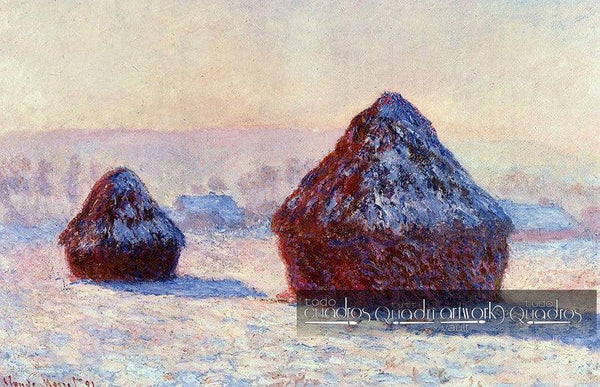
Author: Claude MonetStyle: ImpressionismTheme: Snowy LandscapeEnglish title: Wheatstacks, Snow Effect, MorningType: PaintingTechnique: OilSupport: CanvasYear: 1891Located at: J. Paul Getty Museum, Los Angeles, USA
Depicts stacks of wheat in a snowy landscape, highlighting the cold contrast between the white winter and reddish heaps of grass.
-
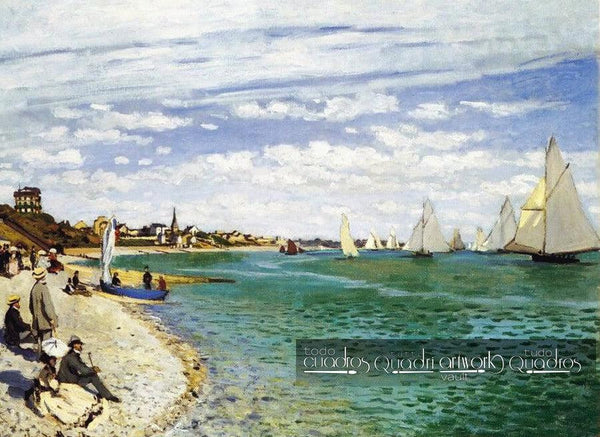
Author: Claude MonetStyle: ImpressionismGenre: SeascapeOriginal title: Régates à Sainte-AdresseEnglish title: Regatta at Sainte-AdresseType: PaintingTechnique: OilSupport: CanvasYear: 1876Located at: MET Museum, New York
The seascape with turquoise and sand colors shows the French coast with the contemporary audience watching the sailboats.
-
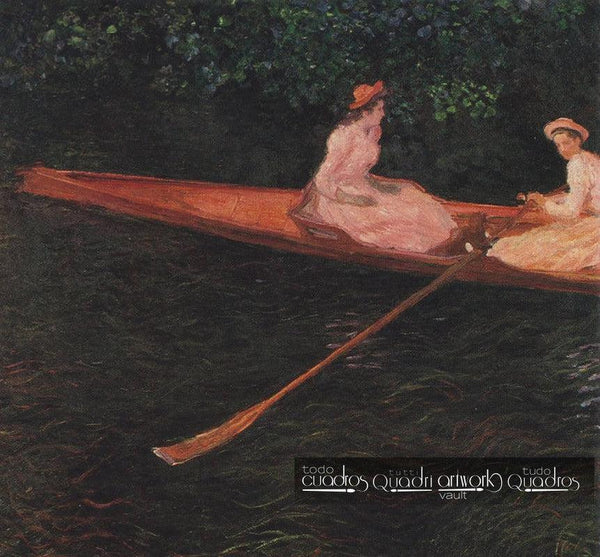
Theme: Period SceneAuthor: Claude MonetStyle: ImpressionismOriginal title: En canot sur l'EpteEnglish title: Boating on the River EpteType: PaintingTechnique: OilSupport: CanvasYear: 1890Located at: São Paulo Museum of Art, Brazil.
Depicts two maidens boating on a boat over the river Epte.
-
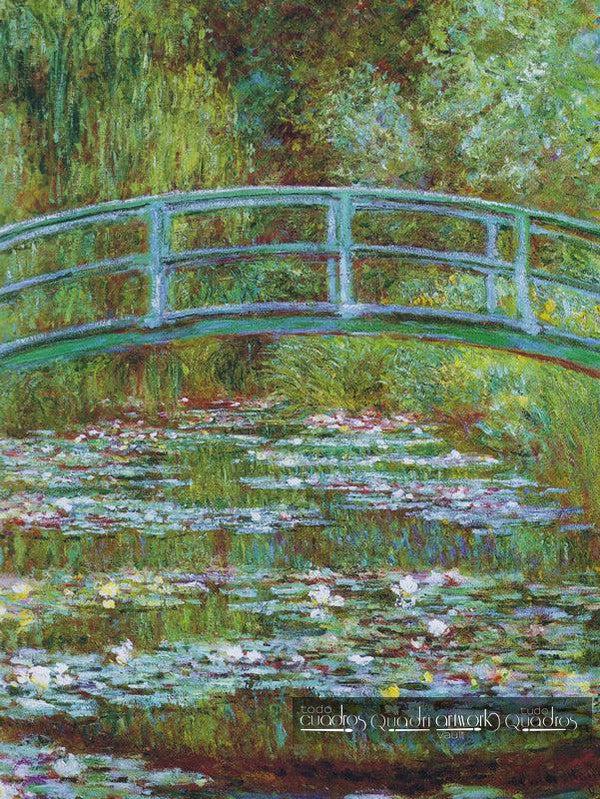
Author: Claude MonetStyle: ImpressionismTheme: NatureEnglish title: Water Lily Pool and Japanese BridgeType: PaintingTechnique: OilSupport: CanvasYear: 1889Located at: MET Museum, New York
Belongs to a series of similar works by the same artist, paintings inspired by the Water Park of Giverny, France.
-

Author: Claude MonetStyle: ImpressionismOriginal title: Charing Cross BridgeType: PaintingTechnique: OilSupport: CanvasYear: 1899Located at: Thyssen-Bornemisza Museum, Madrid
The work is part of a series of paintings with different views of the Thames River, London. A year later, he returned to canvas the same landscape but with a simpler composition and less rich in nuances.
-

Author: Claude MonetStyle: ImpressionismTheme: LandscapesEnglish title: Road of the Farm Saint-SiméonType: PaintingTechnique: OilSupport: CanvasYear: 1864Located at: National Museum of Western Art, Japan.
In English, the title translates to: The Road to the Saint Simeon Farm.
The work features a landscape painted in earthy brown tones, typical of the French autumn.
-
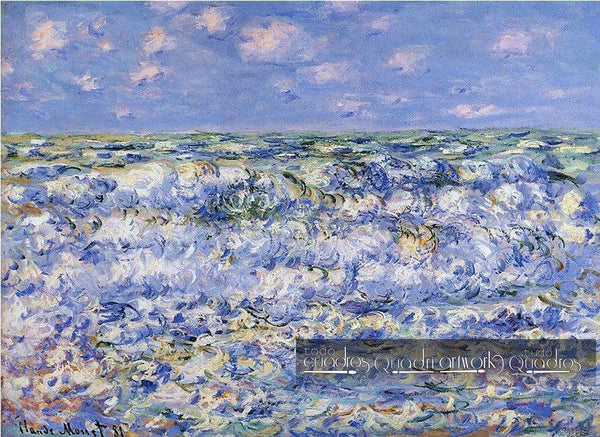
Author: Claude MonetStyle: ImpressionismTheme: LandscapesGenre: SeascapeEnglish title: Waves BreakingType: PaintingTechnique: OilSupport: CanvasYear: 1881Located at: The National Gallery of Australia.
Depicts a landscape with rich textures and colors forming the water and foam of the breaking waves in the sea.
-



